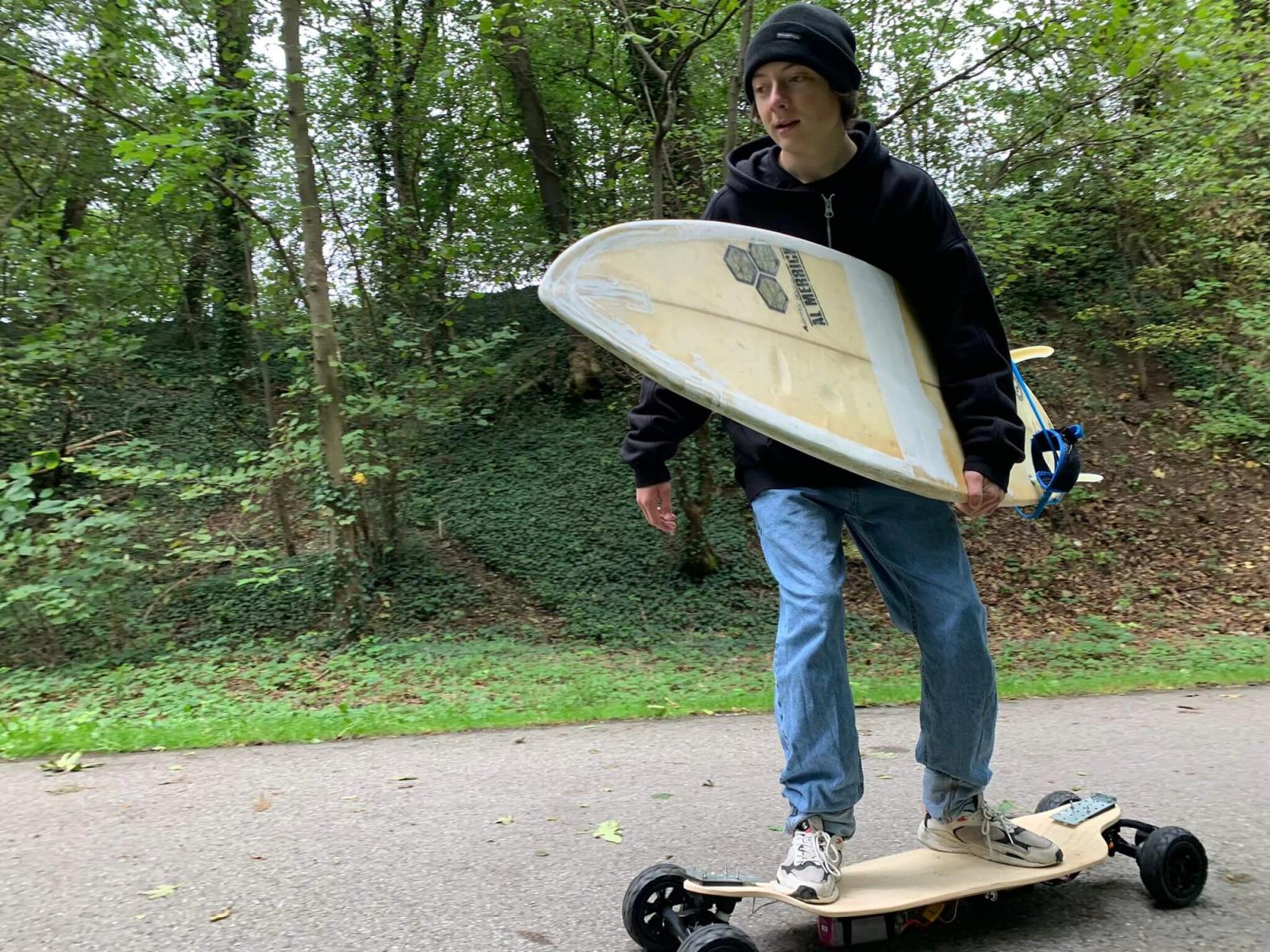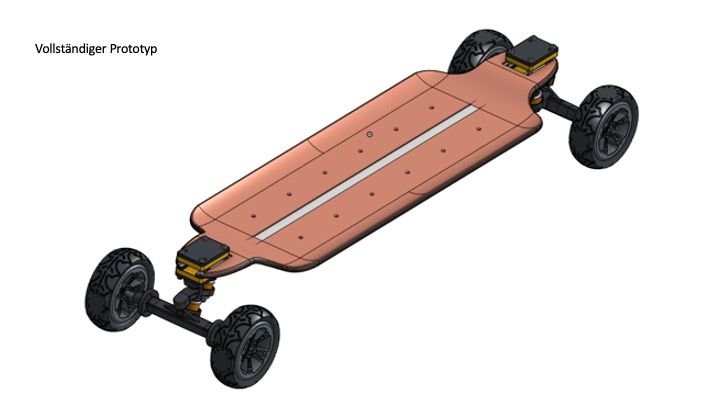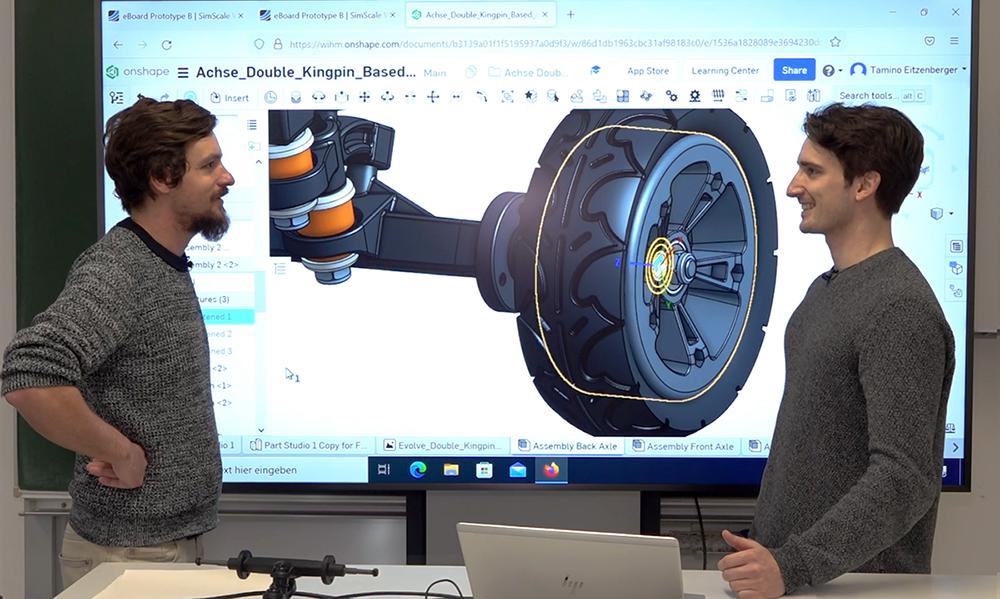
05:12
Michio Kaku, an American theoretical physicist and best-selling author, once said, “In the future, you will simply jump into your car, turn on the Internet, turn on a movie and sit back and relax and turn on the automatic pilot, and the car will drive itself.”
While car companies around the world are racing to make this prediction a reality, new challenges need to be addressed before we can relax and let cars do all the work.
Universities around the globe have ongoing teaching and research activities around the topic of urban mobility apart from self-driving cars. The HM Hochschule München University of Applied Sciences in Munich, Germany, is one of them.
HM Hochschule München University of Applied Sciences is the second largest university of applied sciences in Germany with around 18,000 students. As an institution, it recognizes the future demands of society and industry, while also keeping an open vision for current challenges, such as the continuous rise of fuel prices.
This, along with a growing concern for the environmental impact of traditional gas-powered vehicles, contributes to the recent growth in the number of electric car purchases by consumers.
While Europe has the world’s largest electric vehicle market, inspirational educators are empowering students to think outside of the box and develop new concepts of urban mobility by acquiring industry-critical skills.
A student riding an electric longboard. Courtesy: Professor Robert Meier-Staude/HM Hochschule München University of Applied Sciences

Teaching Sustainable Product Design
Professor Robert Meier-Staude is one of the passionate educators teaching at the HM Hochschule München University of Applied Sciences. As a professor of resource-efficient development and design at the HM, sustainable technology and product-driven design have always been important to him.
Meier-Staude, below, has the goal to get his students excited about engineering by connecting correlation-based methods from engineering mechanics and machine elements with a real project.

“I want to prepare my students to become engineers and to change the world for the better,” Meier-Staude said. He knows that, besides taking a car or bike, there are other ways to commute. Being a passionate surfer himself, Staude had the idea to share with students his vision of “surfing into work with an electric longboard.”
His master course in virtual prototyping with 15 students was a great testing ground for this. The premise of this course is for students to understand the principles of modern computer-aided engineering and apply them to a real project.
Designing an Electric Longboard
Having worked with traditional, on-premise engineering software for all his life, Staude decided to make a change and switch to cloud-native Onshape for this course.
Onshape combines professional-level CAD, built-in PDM, real-time collaboration tools, and user analytics.
Equipped with Onshape to allow for greater collaboration in his project-based instructional approach, the professor wanted to give his students the chance to design a new product, test it, and evaluate new methods of virtual prototyping.

To better facilitate these activities, Meier-Staude used new teaching concepts like the inverted classroom and peer-to-peer teaching.
“Everyone has a different task in a complex project and needs to explain to the others how it works,” he said. Students are teaching students and developing a viable product together. “In our case, they develop an electric longboard in a team.”
While some of the students took care of the design of the electric longboard, another was responsible for the simulation. Collaboration is a key component of Meier-Staude’s classes, which makes Onshape an ideal tool, given it was created for teams.
The Onshape models created by students were loaded into SimScale, an Onshape App Partner. The cinematics simulation of the skateboard could be directly done via this connected cloud app in the web browser.

“It was impressive to see how the connection and data transfer works from Onshape to SimScale for this realistic assembly. In SimScale, we did some additional simplifications to reduce simulation time to the necessary minimum,” Staude explained.
The final product was designed in Onshape and came to life after a three-month period. The electric longboard gives a real sensation of surfing even without water since the board is controlled only by the angle and the center of the mass.
Top Takes from Using Onshape in the Classroom
Students discussing the design of an electric longboard using Onshape. Courtesy: Professor Meier-Staude/HM Hochschule München University of Applied Sciences

What did Meier-Staude think of Onshape after using it with his students? Here are his top takes:
- With Onshape’s cloud-native platform, no staff is needed to update computers, software, and licensing.
- It is a CAD platform that makes it easy to start work.
- Everyone can work wherever she/he wants to. As Onshape is browser-based, students can use it for work in class and work from home.
- During and after the pandemic, Onshape makes remote learning a lot easier/comfortable for the students and the teacher.
- One of the main benefits of Onshape compared to other CAD tools is the improved collaboration and teamwork.
- Overall, the learning curve for students is particularly good.
- Onshape is not only computer-aided design in the cloud. It brings much more than CAD, for example, the multi-sketch and multi-part approaches are unique.
- The Onshape Document is not only a document, but it is a container for all kinds of valuable information.
- Any essential information can be stored – pictures can be uploaded and it connects easily to other cloud solutions like engineering simulation.
- Onshape is currently evaluated for other modules and other faculties have already asked for permission to use it.
- Onshape is the future of computer-aided engineering.
Do you want to design new concepts of urban mobility with your students or address other societal challenges by creating innovative products?
Join the millions of Onshape users from around the world and discover how Onshape for Education is transforming how students learn and create.
Onshape for Education
Get started with Onshape and join millions of students and educators worldwide.
(Bernhard Eberl is the Onshape Education Customer Success Director - Europe.)
Latest Content

- Case Study
- Consumer Products
BOA Technology: Redefining Outdoor Fit Equipment with Cloud-Native Onshape
11.03.2025 learn more
- Blog
- Becoming an Expert
- Assemblies
- Simulation
Mastering Kinematics: A Deeper Dive into Onshape Assemblies, Mates, and Simulation
12.11.2025 learn more
- Blog
- Evaluating Onshape
- Learning Center
AI in CAD: How Onshape Makes Intelligence Part of Your Daily Workflow
12.10.2025 learn more
- Blog
- Evaluating Onshape
- Assemblies
- Drawings
- Features
- Parts
- Sketches
- Branching & Merging
- Release Management
- Documents
- Collaboration
Onshape Explained: 17 Features That Define Cloud-Native CAD
12.05.2025 learn more



